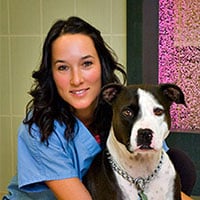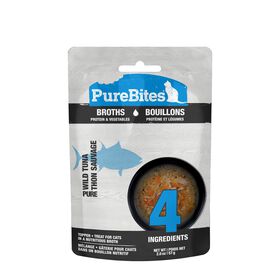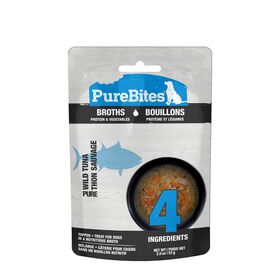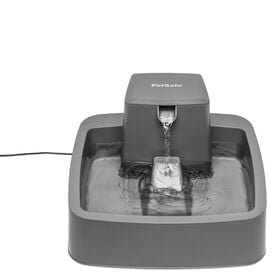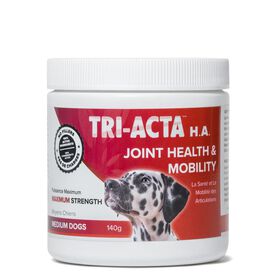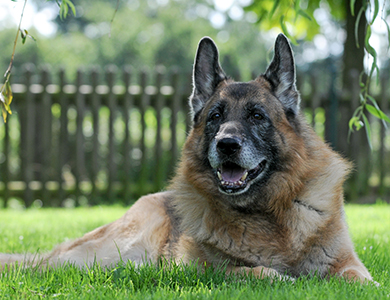 Your furry friend is aging at the speed of light. Indeed, pets reach their golden age at around 7 years old. That’s when they become wiser, communicate more easily, and start following you everywhere! And since you want to keep them by your side as long as possible, it’s important for you to know how to best care for them.
Your furry friend is aging at the speed of light. Indeed, pets reach their golden age at around 7 years old. That’s when they become wiser, communicate more easily, and start following you everywhere! And since you want to keep them by your side as long as possible, it’s important for you to know how to best care for them.
First of all, every animal ages at its own pace. Several factors, such as genetics, breed, environment, medical conditions, and of course, the individual, can have an impact. Around the age of seven, a pet’s basic metabolism begins to slow down, just like their level of activity. They sleep more often, and illnesses can start to develop. It is therefore critical that your pet’s diet be adapted to their current life stage.
Adapting your pet’s diet based on their age
It’s important to adapt your pet’s diet as they age, including adding supplements and making adjustments to their environment to make their life easier. After all, they can’t voice how they feel.
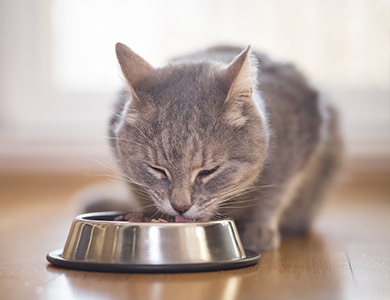 How to adapt their diet over the years:
How to adapt their diet over the years:
- Adapt the quantity of their food based on their physical condition: Make a habit of weighing them once a month to ensure they are maintaining a healthy weight. Some pets may put on weight, while others may shed some pounds. Talk to your vet if this happens.
- Divide their portions: Give your pet a number of small meals per day to help their digestion and increase satiation throughout the day.
- Choose the right type of food: With your pet’s metabolism slowing down, you should start to feed them food for senior cats or senior dogs, which has less calories. These contain an appropriate amount of grains and quality proteins that are easily digestible, low in fat, and rich in fibre. Here are a few tips to help ensure your pet is being fed properly:
- As they are lower in calories, vegetables can be given to your pet as a treat. This will increase the amount of fibre in their diet, and will help them feel satiated.
- It’s important to encourage drinking by increasing the number of bowls in the house, adding water to dry food, and offering canned food as a treat. Some pets love having a drinking fountain, which provides a constant source of water. Aging animals must be properly hydrated.
- Place the bowls in the right spots: It may sound trivial, but a number of pets lose weight because they don’t easily have access to their food bowl! For example, if a dog whose food is downstairs needs to go up and down the stairs to eat, they might be less likely to do so. The same goes for a cat whose bowl is placed too high up. Because their joint pain may be subtle, it might be hard to tell if your kitty is avoiding their bowl because they need to jump up. Here are some tips to prevent this:
- Place the bowls near the spot where they sleep.
- Elevate the bowls so they do not need to bend down, which could cause neck pain.
Diets can also be adapted based on specific health issues. For pets with kidney problems, a reduced-protein diet is recommended. Obese animals can benefit from foods that are low-calory and high-fibre. There are even specially developed mixes designed to promote a healthy brain. Your vet [French only link] will be able to guide you through the foods which are best for your pet.
Aging animals should get plenty of exercise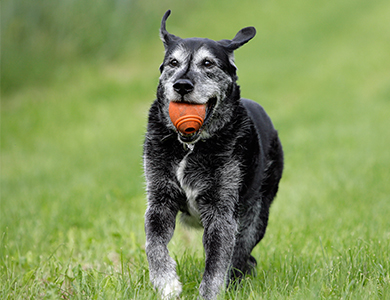
Finally, exercise is crucial to maintaining your pet’s health. Walks—even short, brisk ones—are essential to the maintenance of muscles, joints and psychological well-being.
Aging itself is not an illness. It’s a normal stage of life. Being able to recognize your pet's current life stage will help you observe any changes. All you need to do is to adapt accordingly!
Did you know?
- Large-breed dogs have a life span of roughly eight years, while miniatures and cats can live for more than 14 years.
- Small cat and dog breeds enter the geriatric stage at around eight or ten years of age, and giant breed dogs do so at about five or seven years old.
- Food can have a significant impact on the longevity of your pet, particularly when they are sick.
- Blood tests are recommended around the age of seven to verify your pet’s organ functions.

